Geely's Galaxy Starship SUV gives us a glimpse of the future
Integrating AI-influenced design
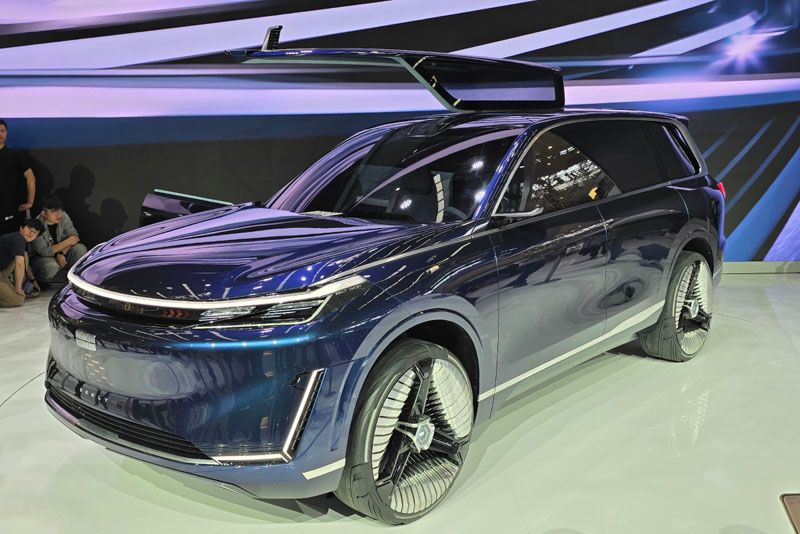
Auto China 2024, held in Beijing, is the biggest automotive and mobility expo in China. As a media guest of Sojitz G Auto Philippines (SGAP), the official distributor of Geely in the Philippines, my recent trip to Beijing offered me a front-row seat to Geely Auto Group’s bleeding-edge design and engineering capabilities.
There at the event, Geely unveiled their flagship Galaxy Starship SUV to a crowd of showgoers numbering in the hundreds. Galaxy is Geely’s latest flagship line, and the Starship SUV is a showcase of the new technologies that the brand has been developing. This SUV encapsulates the essence of the company's vision for the future of automotive innovation through its groundbreaking features and design.
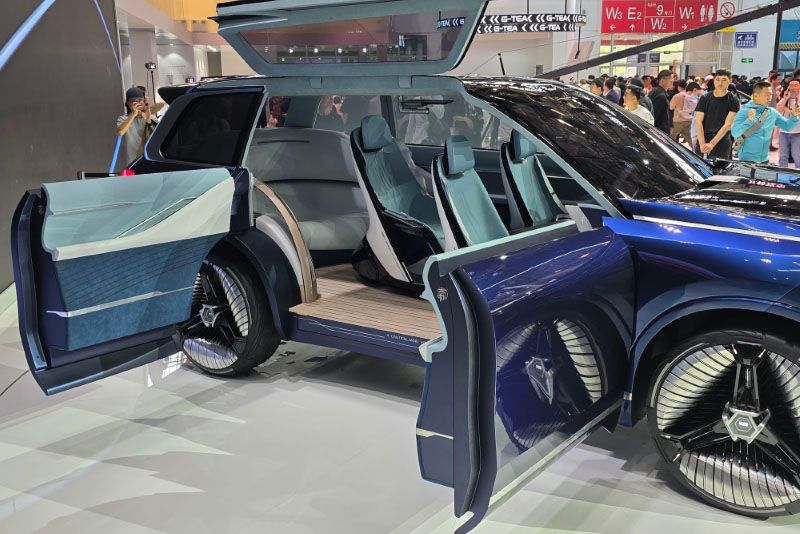
At an estimated length of over five meters, the concept is comparable to massive European SUVs such as the Mercedes-Benz EQS or the BMW X7. The design is striking yet fluid, characterized by a peculiar door design which blends elements of traditional, suicide, and gullwing doors. While the lower front doors open in a traditional manner, the rear passenger door’s lower part opens as a suicide door, and the upper, windowed parts from front to back swing upwards like a gullwing door, suggesting a novel and very futuristic approach to vehicle entry. While unlikely to reach production in its current form, this points to Geely's willingness to redefine conventional design norms in pursuit of their philosophies.
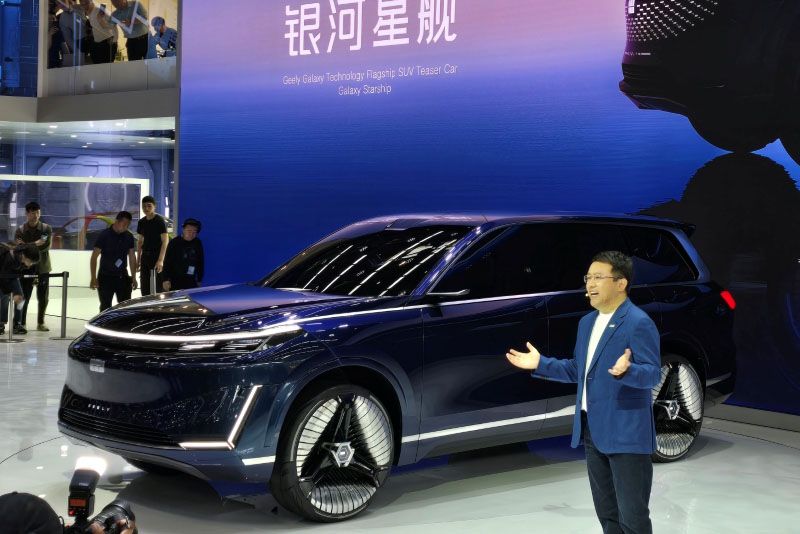
The front of the Galaxy Starship features a grill-less front and an enclosed, dot matrix design reminiscent of the Galaxy E8 sedan. While it adds to the modern aesthetic of the vehicle, it also speaks to a broader trend in the auto industry towards more streamlined, energy-efficient vehicle fronts. All four corners are visually established by massive wheels on low-profile tires. The wheels have a predominantly tri-spoke design, complemented by chrome gills and gloss black strakes. Along the sides, the vehicle displays straight, clean lines typical of many modern electric vehicles, showing Geely's alignment with current, edgy design trends but with distinctive features like the triangular, low-drag wheels and concealed door handles that give it a unique edge.
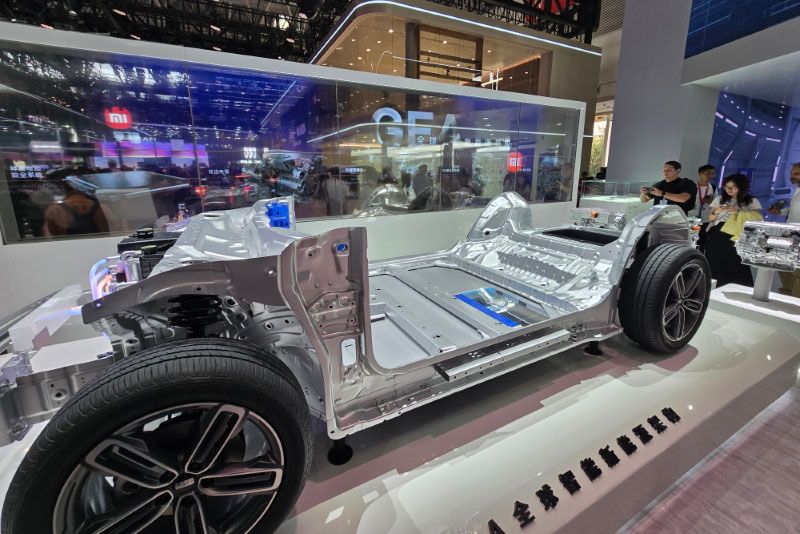
The Galaxy Starship is built on Geely's new GEA (Geely Electric Architecture) platform. This platform represents a significant evolution from the Sustainable Experience Architecture (SEA) and is tailored to support various powertrain systems — pure electric, range extended, and plug-in hybrids. The SUV uses Geely's latest Thor (NordThor) system, most likely an improved version of the NordThor 8848 available on the Galaxy L7 PHEV. The 8848 claims a 44.26% thermal efficiency, while the Starship’s NordThors system boasts a thermal efficiency of 46%, the highest achieved among the NordThor engine line.
According to Jerry Gan, CEO of Geely Auto Group, the Starship also features the company’s 11-in-1 intelligent electric drive system, which Geely claims is the lightest, smallest, and most efficient in the industry, boasting 90.4% efficiency from the compact system. Additionally, the company is claiming an industry breakthrough in that their new 800-volt architecture uses up to 75% less silicon-carbide. Together with the hybrid engine, Geely asserts that the Galaxy Starship SUV is capable of 2000+ kilometers of range on a full tank and battery.
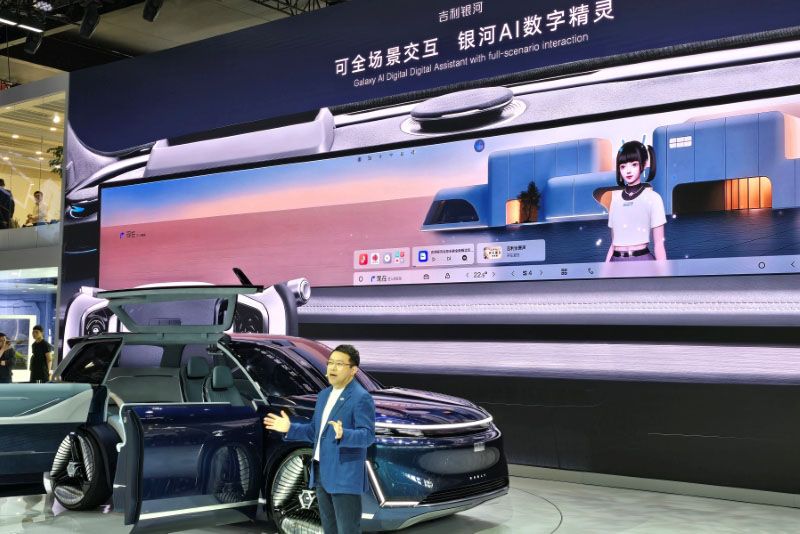
The whole idea of the Starship is that it is heavily influenced in both design and execution by Artifical Intelligence (AI), and the interior of the Galaxy Starship is where this AI fantasy edges closer to reality. The concept features a sci-fi-like cabin that maximizes space (the show concept featured only three seats) with advanced technology integrations, such as seats that can recline completely flat and even roll out of the vehicle via a built-in automatic ramp. The latter of course is far from reality at this point, but this is all part of Geely’s exploration into what it sees as the future experience. This is all complemented by an AI-driven ecosystem that includes a holographic projection of an AI avatar all throughout display points within the vehicle.
Realizable technologies like picture and video interaction are expected to be introduced into the over-the-air (OTA) updates of the Galaxy E8 sedan later this year, showcasing Geely's intent to transition concept technologies into real-world applications. The integration of a Qualcomm Snapdragon 8295 chip within the cockpit powers the full digital experience, including AI, communications and AR integration. Geely Group’s acquisition of phonemaker Meizu also hints at the desire to have tight synthesis between user and machine.
As Geely continues to push the boundaries of what is possible in automotive design and technology, the Galaxy Starship SUV has become the brand’s beacon, clearly directing the company’s next steps in improving their products. As the Starships’ features and technologies make their way into production models, they are set to transform the automotive experience for all.